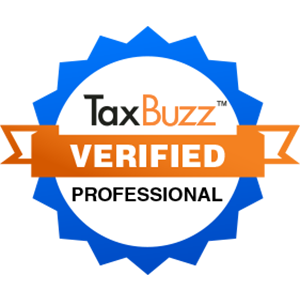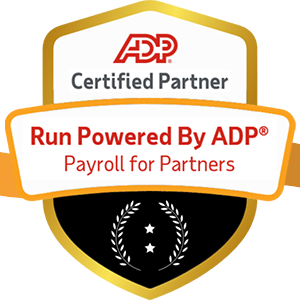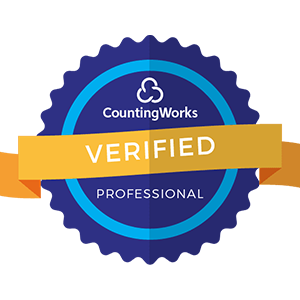In today's fast-paced business world, gut feelings and hunches just don't cut it anymore. Welcome to the era of HR analytics, where data reigns supreme and decisions are backed by cold, hard facts. But don't worry, we're not talking about turning your HR department into a team of robots. Instead, we're diving into the exciting world of using data to make smarter, more informed decisions about your most valuable asset: your people.
Why HR Analytics Matters (Even for Small and Medium-Sized Businesses)
.jpg?width=2880&height=1458&name=Why%20HR%20Analytics%20Matters%20(Even%20for%20Small%20and%20Medium-Sized%20Businesses).jpg)
Let's face it: the term "HR analytics" might sound like something only big corporations with massive budgets can afford to care about. But here's the truth bomb: businesses of all sizes can (and should) harness the power of data to supercharge their HR practices.
Think of HR analytics as your secret weapon. It's like having a crystal ball that helps you:
- Predict which candidates are most likely to succeed in your company
- Understand why your top performers are leaving (and how to make them stay)
- Identify skills gaps before they become productivity sinkholes
- Create a workplace culture that actually, you know, works
The best part? You don't need a data science degree or a massive budget to get started. With the right approach and tools, even small and medium-sized businesses can tap into the goldmine of insights hiding in their HR data.
The HR Analytics Mindset: Shifting from Gut to Data
Before we dive into the nitty-gritty of HR analytics, let's talk about the most important shift you need to make: your mindset.
The Old Way vs. The New Way
Old way: "I have a feeling that..." New way: "The data suggests that..."
Old way: Making decisions based on anecdotes and personal experiences New way: Making decisions based on patterns and trends identified in data
Old way: Reactive approach to HR issues New way: Proactive approach that anticipates and prevents problems
The DIKW Pyramid: Your Framework for HR Analytics Success
To truly embrace data-driven decision making, it's helpful to understand the DIKW Pyramid:
- Data: Raw numbers and facts
- Information: Data that has been processed and given context
- Knowledge: Information that has been analyzed and understood
- Wisdom: The ability to make sound decisions based on knowledge
Your goal in HR analytics is to climb this pyramid, turning raw data into actionable wisdom that drives your business forward.
Getting Started with HR Analytics: A Step-by-Step Guide
Ready to dip your toes into the world of HR analytics? Here's your roadmap to success:
Step 1: Identify Your Business Goals
Before you start crunching numbers, you need to know what you're trying to achieve. Ask yourself:
- What are our top business priorities?
- What HR-related challenges are we facing?
- What questions do we need answered to make better decisions?
Example goals:
- Reduce employee turnover by 20% in the next year
- Improve the quality of new hires
- Increase employee engagement scores
Step 2: Assess Your Current Data Situation
Take stock of what data you already have and where it's stored. This might include:
- HRIS (Human Resource Information System) data
- Applicant Tracking System (ATS) data
- Performance review data
- Employee surveys
- Time and attendance records
Pro tip: Don't worry if your data isn't perfect. Start with what you have and improve as you go.
Step 3: Choose Your Key Metrics
Based on your goals, identify the most important metrics to track. Some examples:
- Turnover rate: Number of employees who leave / Average number of employees
- Time to hire: Days from job posting to accepted offer
- Cost per hire: Total recruiting costs / Number of hires
- Employee engagement score: Based on survey results
- Revenue per employee: Total revenue / Number of employees
Step 4: Collect and Clean Your Data
Gather the relevant data from your various sources. This might involve:
- Exporting data from different systems
- Conducting new surveys
- Setting up processes to consistently collect data going forward
Data cleaning tips:
- Remove duplicate entries
- Standardize formats (e.g., date formats)
- Check for and correct obvious errors
Step 5: Analyze and Visualize
Now comes the fun part: finding patterns and insights in your data. You don't need fancy tools to get started:
- Use Excel for basic analysis and charts
- Try free or low-cost data visualization tools like Google Data Studio or Tableau Public
- Look for correlations, trends, and outliers in your data
Step 6: Draw Insights and Make Recommendations
Based on your analysis, what story is your data telling? Use these insights to make recommendations for action. For example:
- Data insight: Employees who participate in mentorship programs have a 30% lower turnover rate.
- Recommendation: Expand the mentorship program and encourage more employees to participate.
Step 7: Implement Changes and Monitor Results
Put your data-driven recommendations into action, then track the results. This creates a feedback loop that allows you to continually improve your HR practices.
5 HR Analytics Use Cases for Small and Medium-Sized Businesses

Let's explore some practical ways you can use HR analytics to solve real business problems:
1. Predicting and Preventing Employee Turnover
The problem: High turnover is costly and disruptive.
The analytics approach:
- Analyze data on past employee departures
- Identify common factors among employees who left (e.g., tenure, department, manager, compensation)
- Use predictive modeling to flag current employees at risk of leaving
Potential actions:
- Implement targeted retention strategies for at-risk employees
- Address systemic issues contributing to turnover (e.g., improving management training if certain managers have higher turnover rates)
2. Optimizing the Hiring Process
The problem: Hiring the wrong people is expensive and time-consuming.
The analytics approach:
- Track the source of your best hires
- Analyze the characteristics of successful employees
- Measure the effectiveness of different interview techniques
Potential actions:
- Focus recruiting efforts on the most effective channels
- Refine job descriptions and screening criteria based on successful employee profiles
- Implement data-driven interview questions and assessments
3. Improving Employee Engagement
The problem: Low engagement leads to decreased productivity and higher turnover.
The analytics approach:
- Conduct regular pulse surveys to measure engagement
- Analyze factors correlated with high and low engagement scores
- Track engagement trends over time and across different teams
Potential actions:
- Address specific issues identified in low-scoring areas
- Replicate successful practices from high-engagement teams
- Implement targeted programs to boost engagement (e.g., recognition initiatives, professional development opportunities)
4. Identifying Skills Gaps and Training Needs
The problem: Rapidly changing business needs can lead to skills shortages.
The analytics approach:
- Map current employee skills against future business requirements
- Analyze performance data to identify areas where skills gaps impact productivity
- Track the effectiveness of training programs
Potential actions:
- Develop targeted training programs to address identified skills gaps
- Adjust hiring criteria to focus on critical future skills
- Implement cross-training or job rotation programs to build versatility
5. Optimizing Compensation and Benefits
The problem: Balancing competitive compensation with budget constraints.
The analytics approach:
- Analyze market salary data for key roles
- Track correlation between compensation and performance/retention
- Measure the utilization and perceived value of different benefits
Potential actions:
- Adjust compensation strategies to align with market rates and internal equity
- Implement performance-based bonus structures
- Tailor benefits packages based on employee preferences and utilization data
Overcoming Common HR Analytics Challenges
Implementing HR analytics isn't always smooth sailing. Here are some common challenges you might face and how to overcome them:
Challenge 1: Data Quality Issues
The problem: Incomplete, inaccurate, or inconsistent data can lead to faulty conclusions.
The solution:
- Start small and focus on cleaning and standardizing your most critical data points
- Implement data governance processes to ensure ongoing data quality
- Use data validation tools to catch errors early
Challenge 2: Lack of Analytics Skills
The problem: Your HR team might not have experience with data analysis.
The solution:
- Invest in training for your HR team on basic data analysis and visualization skills
- Consider partnering with other departments (e.g., Finance or IT) for analytics expertise
- Explore user-friendly analytics tools designed for HR professionals
Challenge 3: Privacy and Ethical Concerns
The problem: Collecting and analyzing employee data raises important privacy considerations.
The solution:
- Develop clear policies on data collection, usage, and storage
- Be transparent with employees about how their data is being used
- Focus on aggregate data rather than individual-level analysis when possible
- Stay informed about data privacy regulations in your region
Challenge 4: Resistance to Change
The problem: Some stakeholders might be skeptical of a data-driven approach to HR.
The solution:
- Start with small wins to demonstrate the value of HR analytics
- Use storytelling techniques to make data insights more compelling and relatable
- Involve skeptics in the process to address their concerns and build buy-in
Challenge 5: Turning Insights into Action
The problem: Gathering data is one thing; using it to drive real change is another.
The solution:
- Set clear goals and KPIs for your HR analytics initiatives
- Create action plans that tie directly to your data insights
- Regularly review and communicate the impact of data-driven changes
The Future of HR Analytics: Trends to Watch

As you embark on your HR analytics journey, keep an eye on these emerging trends:
1. Artificial Intelligence and Machine Learning
AI-powered tools are making it easier for non-technical HR professionals to derive insights from complex data sets. Watch for:
- Chatbots that can analyze employee sentiment in real-time
- AI-driven recommendations for personalized employee development plans
- Predictive models that can forecast future workforce needs with uncanny accuracy
2. People Analytics for Employee Well-being
The focus is shifting from purely performance-based metrics to a more holistic view of employee well-being. Expect to see more analytics around:
- Work-life balance
- Mental health and stress levels
- Social connections and collaboration patterns
3. Continuous Listening and Real-time Analytics
Annual surveys are giving way to more frequent, pulse-style check-ins. This trend enables:
- Faster response to emerging issues
- More agile HR practices that can adapt to rapidly changing conditions
- A deeper understanding of the employee experience throughout the employee lifecycle
4. Ethics and Responsible AI in HR
As HR analytics becomes more sophisticated, there's a growing emphasis on using data responsibly. Key considerations include:
- Ensuring algorithmic fairness in hiring and promotion decisions
- Protecting employee privacy while leveraging data for insights
- Maintaining transparency in how AI-driven decisions are made
5. Integration of HR Data with Business Metrics
HR analytics is increasingly being viewed as a critical component of overall business strategy. Look for:
- Closer collaboration between HR and other departments (Finance, Operations, etc.)
- HR metrics being included in executive dashboards alongside traditional business KPIs
- A shift from HR as a cost center to a strategic driver of business value
Your HR Analytics Action Plan: Next Steps
Ready to transform your HR department into a data-driven powerhouse? Here's your action plan:
- Assess your current state: Take stock of your existing data, tools, and analytics capabilities.
- Set clear goals: Identify 2-3 key business challenges you want to address with HR analytics.
- Start small: Choose one high-impact project to focus on initially. Success here will build momentum.
- Invest in skills: Provide training or resources to help your team develop basic data analysis skills.
- Choose the right tools: Research HR analytics platforms that fit your budget and needs.
- Create a data-driven culture: Encourage all HR decisions to be backed by data, no matter how small.
- Measure and communicate results: Track the impact of your HR analytics initiatives and share successes widely.
- Iterate and improve: Continuously refine your approach based on what you learn.
Remember, the journey to becoming a data-driven HR function is a marathon, not a sprint. Be patient, stay curious, and don't be afraid to experiment. With each insight you uncover, you're one step closer to unlocking the full potential of your workforce.
The bottom line: In today's competitive business landscape, HR analytics isn't just a nice-to-have—it's a must-have. By embracing a data-driven approach, you're not just modernizing your HR practices; you're positioning your entire organization for success. So, are you ready to let the data do the talking?

.jpg?width=2880&height=1458&name=Why%20HR%20Analytics%20Matters%20(Even%20for%20Small%20and%20Medium-Sized%20Businesses).jpg)




